THE FUTURE OF THE NETHERLANDS
11 Dec 2019
In the (literal) heat of the global climate debate, Dutch design and research firm FABRICations has been active in the exploration of new models of energy landscapes for the Netherlands.

Wind-park | Tilted wind turbines orient towards wind direction shaping the experience of the landscape. From Hart Van Holland Energy Assessment (with Posad, Evolv, Buck Consultants)
FABRICations claims that drastically reduced carbon emissions will only be possible if the spatial limits of traditional renewable energy infrastructure are challenged.
To do so, it proposes a data-oriented analytical framework, and promotes three core values for design thinking in relation to energy:
1 | Combination of different renewable energy sources, like biomass, solar energy, wind energy, and geothermal energy, rather than relying on one source. All means of energy production present very specific conditions, requirements and aesthetic-functional features, which become a design toolbox to interact with each context differently. 
A circular farm | Biomass generated from organic waste is used to power the agricultural facilities. From Hart Van Holland Energy Assessment (with Posad, Evolv, Buck Consultants)
2 | Energy infrastructure should be combined with other functions wherever possible, like eco-tourism, mobility, circular economy and ecology. From an invasive and disruptive presence in the landscape, energy production can become an engaging infrastructure to activate the territory with new aesthetic and spatial qualities.
3 | The spatial impact that the energy transition will have in a densely populated country like the Netherlands should be approached as a cultural act rather than a technical one. This requires input from designers, architects and landscape architects. A future-proof energy system is an energy system that is embraced by the people that experience it in their everyday lives. 
Ecological energy network | The transmission network could connect to urban ecologies, creating space for nature in the city. With Lola Landscape and Studio 1:1
Wind turbines and solar panels can be designed to integrate into the landscape, with innovative shapes and functionalities that interact with their surroundings. The new design does not disrupt local ecologies and builds on the cultural identity of the landscape to become an added value for local tourism.
Wind turbines, for example, can change poetically with the wind direction and form a play of lights in the night. Organically-shaped PV panels would bounce the reflection of the sun in various directions on a dunes landscape, using light refraction to strengthen the natural experience of local nature. 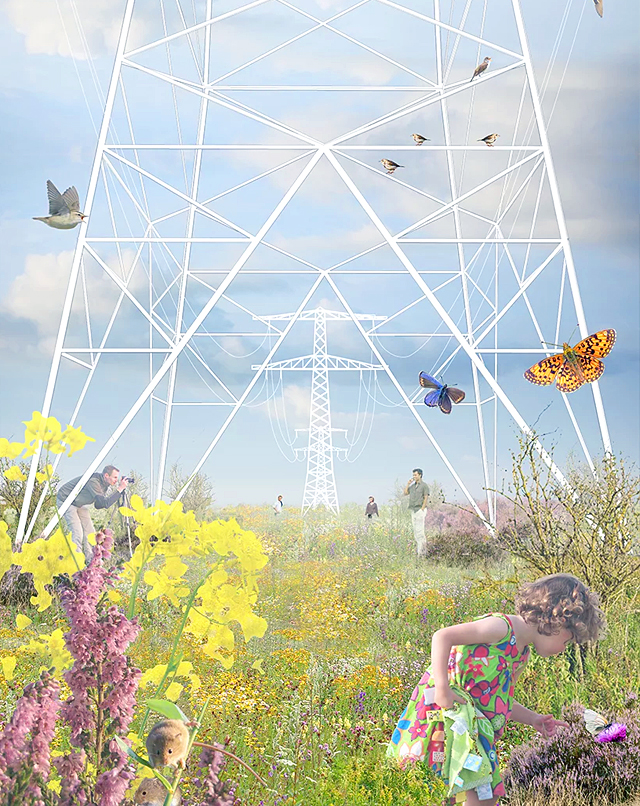
Ecological energy network | Nature realised under the transmission network could be a destination in itself, with leisure activities and temporary stay zones. With Lola Landscape and Studio 1:1
To minimise the impact on natural landscapes, wind turbines and solar panels could be located along highway corridors, taking advantage of leftover space in existing infrastructure. Dynamically located PV panels along highways could reflect and react to the speed of cars. Moreover, assuming that mobility will be electrified, the produced energy can be used directly for charging vehicles. Dynamically located PV panels along highways could reflect and react to the speed of cars.
Agricultural economies can benefit from integration with biomass energy production. Organic waste produced in farms can be transformed locally into biomass to power agricultural facilities, aiming for a circular economy with zero waste. Biogas storage tanks could be shaped as small artificial hills, playful and elastic, inviting young visitors to explore and bounce on. 
Eco-park | PV panels integrated into the landscape and tree-like, branched windmills are to become iconic elements. From Hart Van Holland Energy Assessment (with Posad, Evolv, Buck Consultants)
Due to safety reasons, land in proximity to the high voltage grid and energy production zones is subject to considerable usage restrictions, especially in urban areas. By taking advantage of this often-neglected space, a niche for biodiversity can be created, generating green corridors and biodiversity reservoirs. A powerful experience of the landscape would be generated by the contrast of steel electricity infrastructure and the soft flower-rich meadows under them.
Via designboom

MORE NEWS
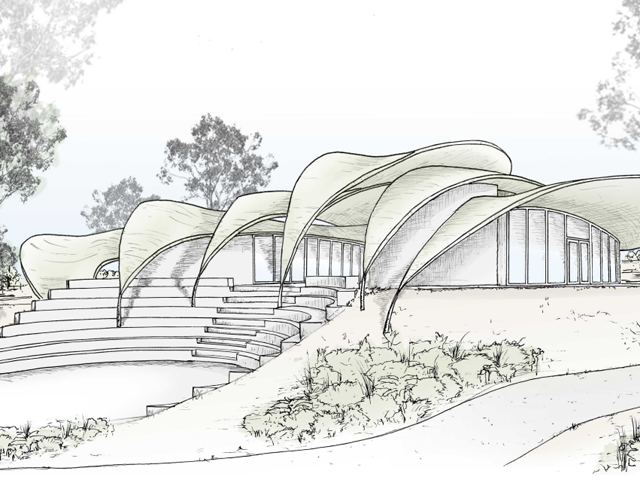
JARRAHDALE TRAIL CENTRE TAKES DESIGN CUES FROM NATIVE FLORA
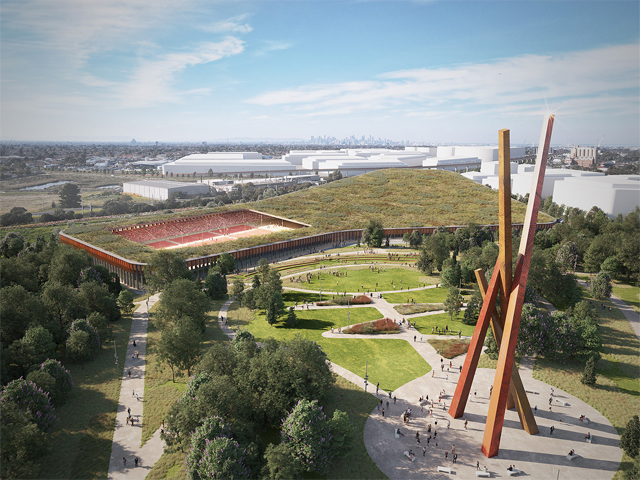
MELBOURNE'S NEW PARK ON A FORMER LANDFILL SITE

HARNESSING THE POWER OF DESIGN TO TRANSFORM CITIES
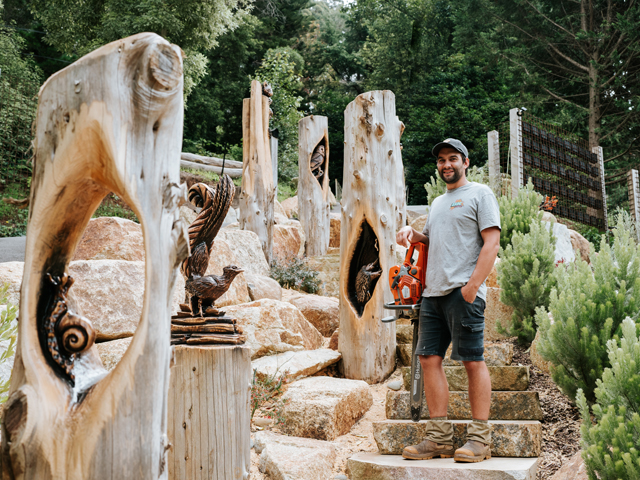
WOOD CARVING WITH BRANDON KROON
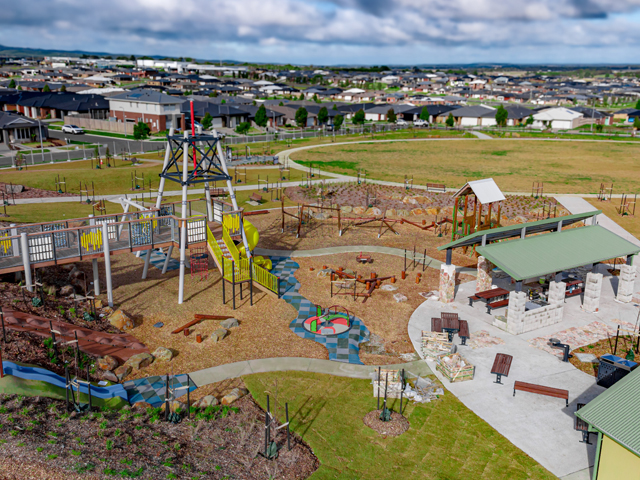
STRIKING GOLD IN BALLARAT

